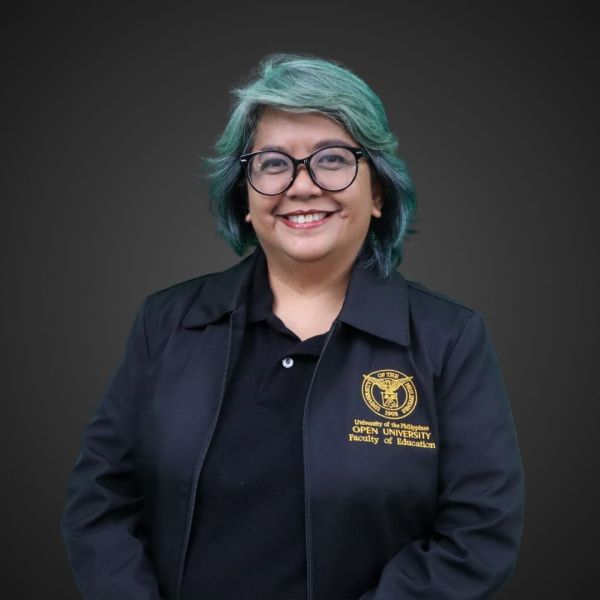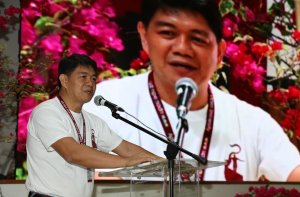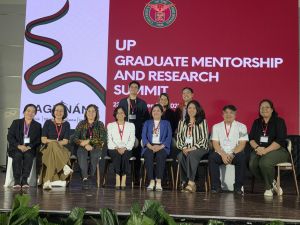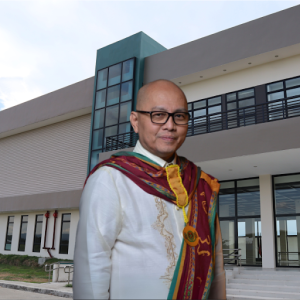In observance of the International Day of Peace and the UP Day of Remembrance on 21 September 2025, we share faculty members’ perspectives on peace — its importance and how it shapes their work. In this piece, Associate Professor Aleta Villanueva of the UPOU Faculty of Education shares her insights on how peace can be taught to students.
When we talk about peace, it is often associated with the absence of war or conflict. Among older Filipinos, “peacetime” was used to describe such a period. It specifically refers to the period before the outbreak of the Second World War, or specifically, the years of the Philippine-American War before the Japanese occupation of the Philippines. Understandably, this era was marked by an absence of large-scale armed conflict, yet it was also a time of American colonial rule. Can we call this era truly peaceful? And more importantly, what does peace even mean?
What is peace?
Dr. Aleta Villanueva, Associate Professor at the Faculty of Education, defines peace as “a state of mind or consciousness and experience coupled with genuine work and action on the ground, which enables individuals, groups, and communities to relate with each other in harmony and act on shared beliefs or values towards the common good.”
Dr. Villanueva has been teaching Citizenship and Peace Education, a course under the Bachelor of Education Studies at the UP Open University. She is also the Program Chair of the Diploma in and Master of Arts in Social Studies Education. Her research work covers virtual communities, open and progressive schooling, and inquiry learning.

Dr. Aleta Villanueva, Associate Professor at the Faculty of Education, teaches the undergraduate course Citizenship and Peace Education at UPOU.
Teaching and Learning Peace
To her, peace education rests on a set of values like respect, rights and responsibilities, courage, relatedness, and a sense of others. It is equally important that those values are translated into concrete actions.
In her teaching experience, there are many ways to practice peace education. First, she emphasizes the importance of creating “safe spaces in schools and communities — for women, youth and children — where their rights are respected.”
Dr. Villanueva also sees value in allocating dedicated class time to engage with inquiry learning projects on peace education. Inquiry learning involves approaches and activities where students ask questions, investigate, and explore possible solutions or even come up with actions to take part in these solutions. An example of this would be an inquiry study unit on World Peacemakers and Leaders, where students tackle types of leadership and gatekeeping in government and other institutions or organizations that promote peace.
In an interdisciplinary unit on World Religions, Art, and Social Studies, students could organize an advocacy campaign through Art for Peace. She shares, “Imagine examining symbols, icons, and other finds on peace across varied religions and discovering what we have in common in terms of shared beliefs about peace and the attainment of peace — then how to use art to express and promote these concepts.”
Peace education activities can also be organized across several programs. Dr. Villanueva describes a possible Learning Project on Creating Safe Spaces for Self-care or Peaceful Mindsets:
“Imagine a levelled-up version of a peace campaign project involving students from two General Education (GE) courses and one concentration course in the Associate Program or two to three courses in the Bachelor of Education Studies (BES). Making it a common project to be declared as a Service Learning Option (SLOs), you start with the end in mind and backward plan for a Peace Project. You then collaborate with other suitable partners, including student volunteers from your courses, who are also members of student organizations, and match the project objectives with specific course learning outcomes and topics. The faculties-in-charge of these courses serve as ‘allies’, harnessing collaborative efforts to turn the project into a reality. You will be surprised to see how students are able to level up and co-lead these forms of SLOs.”
Dr. Villanueva also shared a simple learning unit on friendships, which she has witnessed among primary grade schoolers. In designing this unit, she raised these guiding questions: How can we bring our children and adolescents to that space to reflect on shared meanings of friendships and relatedness, all of which bring us peace, joy and happiness. And how do we resolve conflicts within our friendships through proactive communication and acceptable expressions of emotion? She emphasized that concrete ways to care for our relationships is an important aspect of childhood and adolescence or being human — and we carry these as we grow and join clubs, school orgs and our workplaces, too.
Teaching Challenging Peace Topics
Dr. Villanueva also believes that inquiry learning is a form of open learning which allows educators to recreate their lessons to come up with student-centered learning projects around themes in peace education. Key concepts such as rights and responsibilities, global citizenship and participation, diversity and shared leadership, social justice and shared values can serve to guide the development of an interdisciplinary learning project.
“As a progressive teacher and online educator,” she explained, “we must continue to reinvent ways for relevant themes and even controversial issues to be discussed in our classes. We must look at students as our partners in these efforts and have faith in their capacity to tackle the painful, the difficult, or the controversial. Most of all, we should give them the opportunity to argue, to debate, and most of all to listen and accommodate varied perspectives to arrive at a common understanding or express those shared values as human beings. And even if there are outlier or divergent ideas, these have to be acknowledged as part of meaning-making.”
The “how” of teaching controversial issues is a common concern among my DSSE students.
Hence, the Social Studies Education team has moved to propose an additional core course, “The Study of [or Teaching of] Controversial Issues and Contemporary Global Problems,” as well as an elective course, “Education for Social Responsibility” in the revision of UPOUs Social Studies Education programs to continue advocating for peace and global citizenship education. Hence, at the curricular or program level, we are able to participate in what it takes to deliver peace education.
“In confronting these needs and concerns”, she added, “we realize that peace is worth hoping for and fighting for. Then we move as one.”
Toward Lasting Peace
Looking forward, she believes that “our children and youth need to see that the Philippines and Filipinos are worth living for. I truly believe we are all doing our jobs in our workplaces, our families, and our communities. We have honest people in government doing their service for our peace of mind, for peace in our barangays and communities.”
“As a teacher, I grow weary of the waiting that we citizens have to do for some government authorities to act honorably. What I have yet to see are genuine and bold steps towards reconciliation,” she said.
More than the absence of conflict, genuine and lasting peace requires an environment where people can share their perspectives, even opposing ones, and work together to reach a shared understanding. Only when citizens are empowered to uphold their rights and fulfill their responsibilities toward each other can peace be nurtured and truly transform our nation for the better. Education plays a crucial role in preparing the future generations to imagine and create a more peaceful and just society.











